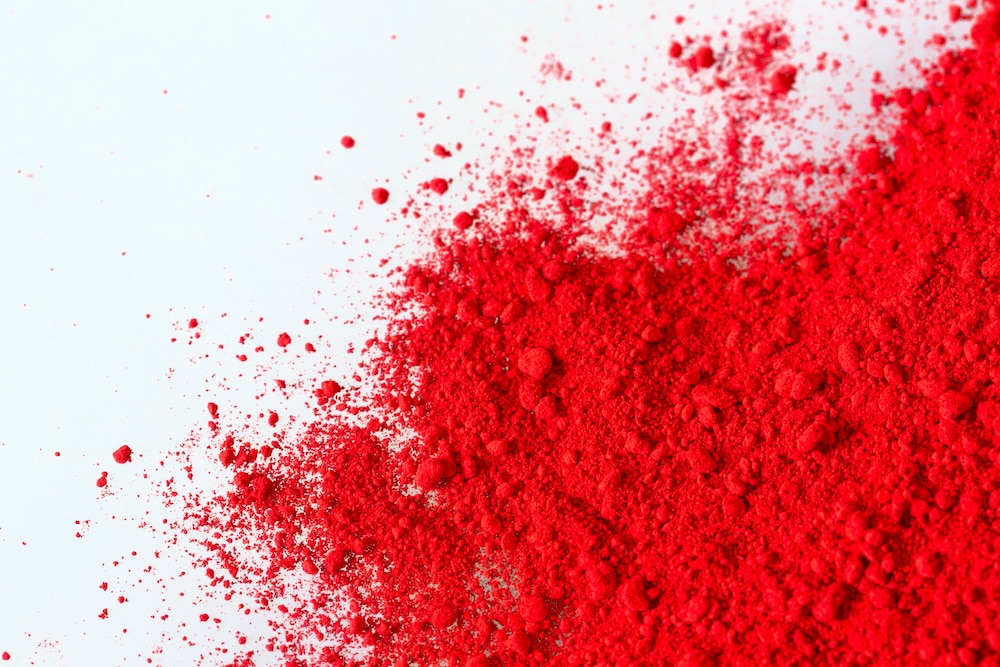Makeup was lethal 5,000 years ago, because it was laced with mercury
The earliest cases of human mercury poisoning were caused by a red pigment made from cinnabar.

Ancient cosmetics evidently didn’t have to pass any quality control tests.
While many types of pigments are used today for everything from lipstick to cosplay body paint that can turn you into the Hulk or Hellboy, there was one used in ancient Iberia (what is now Spain and Portugal) that turned out to be deadly. The vivid red pigment that is thought to have been used on the face and body, as well as for painting, funerary practices, and possibly mind-altering rituals, has now been proven to have caused the earliest cases of mercury poisoning.
When researcher Steven Emslie studied the bones of individuals who lived during Late Neolithic and Copper Age Iberia, the cause of death revealed itself. It was the mercury-laden cinnabar powder they either worked with, wore on their bodies, and possibly ingested (where potential hallucinogenic effects come in) that killed them. He led a study recently published in International Journal of Osteology. But what made this deadly red so desirable?
“Cinnabar is very difficult to process; you grind and sieve the ore multiple times to extract the red powder,” Emslie told SYFY WIRE. “I think that intense labor to do this, and the resulting bright red pigment, brighter than hematite or ochre, made it a high value commodity.
It is already known that many ancient cultures revered the color red for its symbolism. Red ochre was often used in cave paintings or to cover the faces, and sometimes entire bodies, of the dead, and also as war paint or face paint. The vermilion red pigment that is produced with powered cinnabar is much brighter than the rusty shade of red you would get with red ochre. It came with a price. In a twisted sort of irony, the faces and bodies of those who had died from mercury poisoning were often covered with it, probably to show status even in the afterlife.
You didn’t need to actually wear anything containing cinnabar for the poison to take over. If you were exposed to it for long enough, it would get on your skin and in your hair, and eventually be absorbed into the body. Many artisans worked with the pigment every day to paint temples, statues, and other symbolic or decorative pieces. Anyone who prepared the dead for burial and painted those of high status was also exposed. There may have also been rituals that required ingesting the substance for an altered state of mind that brought on otherworldly visions.
“Breathing in or ingesting the dust from processing the ore would lead to Hg breaking down from the HgS and entering the blood stream,” Emslie said. “It can then accumulate in the kidney, brain, and other soft tissues, eventually reaching the bone.”
Some 5,000 years after so any Iberians perished from exposure to the powder, bone was how Emslie was finally able to determine how they died. He needed to go more than skin deep for this (not that there was any skin left). After bringing the victims’ remains to the lab, he drilled into the humerus, tibia, and femur to remove the inner compact bone. This is the lining inside the bone made up of a layer of cells known as the endosperm. That part of compact bone was powdered and analyzed three times to determine how much mercury there was in the person’s system.
“The bright red color likely represented blood and life,” Emslie said. “Cinnabar also can be a preservative over the body, but it definitely showed a higher status of the individuals in the tombs along with all the other burial offerings.”
It is doubtful the ancient Iberians ever suspected that the same hue which supposedly gave them life actually killed them. Whoever survived their encounters with cinnabar was prone to erethism, or chronic mercury poisoning, that can literally mess with your head, which is why it is often called mad hatter’s disease. If this stuff makes its way into the brain, it can trigger headaches, rash, nausea, vomiting, diarrhea, and erratic changes in behavior. There can be severe effects on mood, memory, and sensation. Your entire personality may change.
The Iberians were not the only culture to be murdered by red makeup. The ancient Romans were really going for that naturally flushed look, and used cinnabar as a blush. Today the danger of mercury poisoning lies in skin whitening creams that have become especially popular in many parts of Asia. There is also a risk if you use counterfeit or otherwise sketchy cosmetics that have not passed any tests for safety. Emslie also recalls a case of a California woman being permanently disabled after using a cream that contained a substantial amount of mercury.
Maybe the ancients had no idea, but is it really worth it to die for (your idea of) beauty?





























